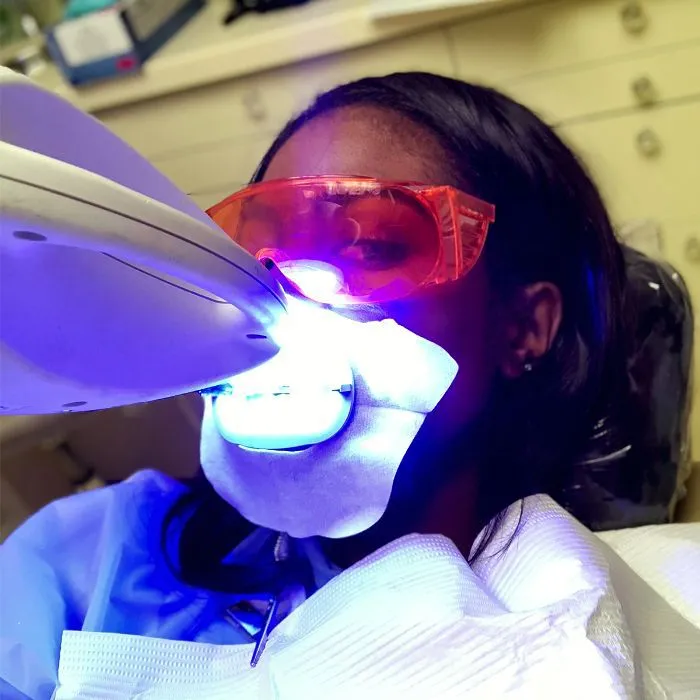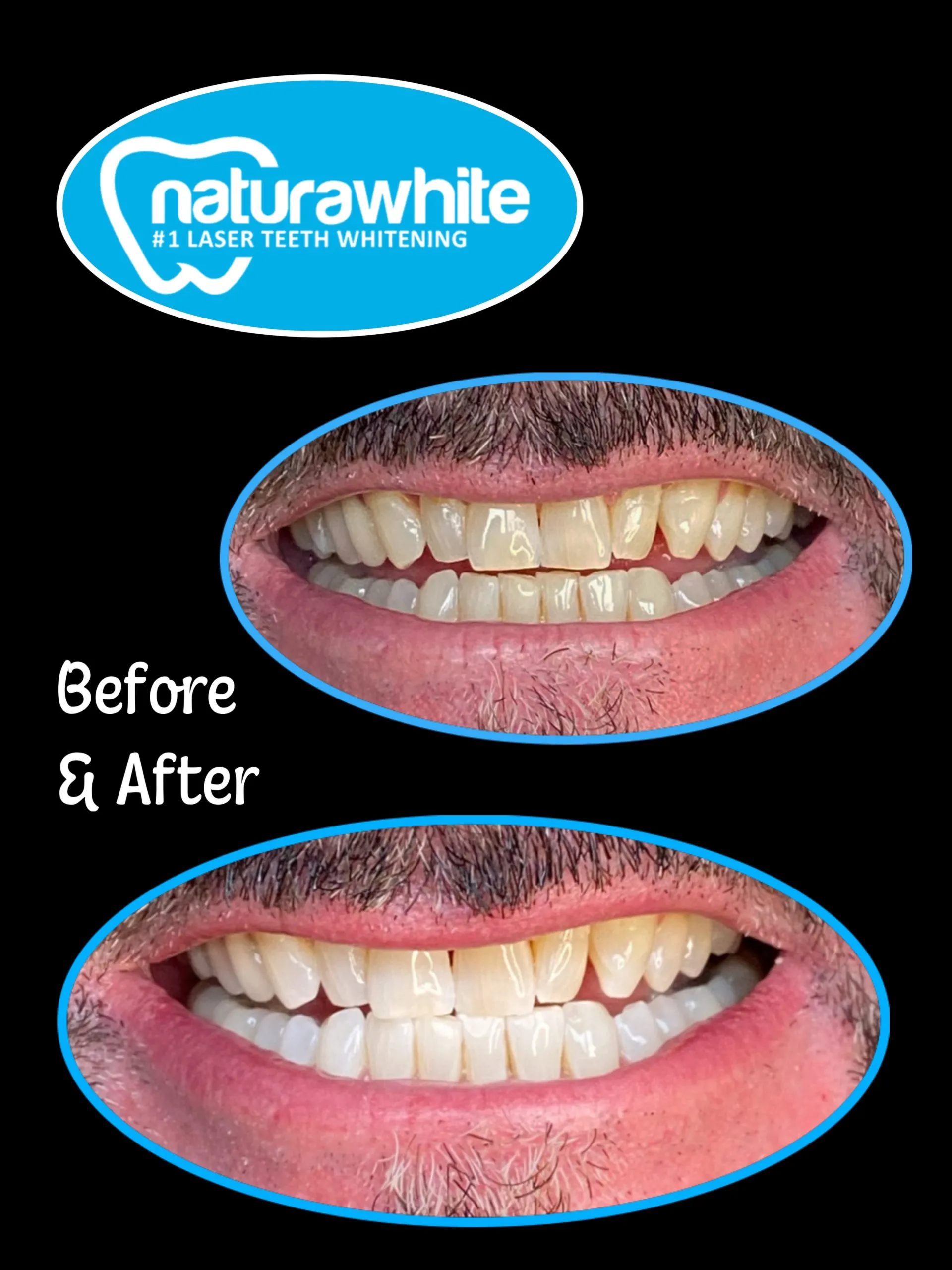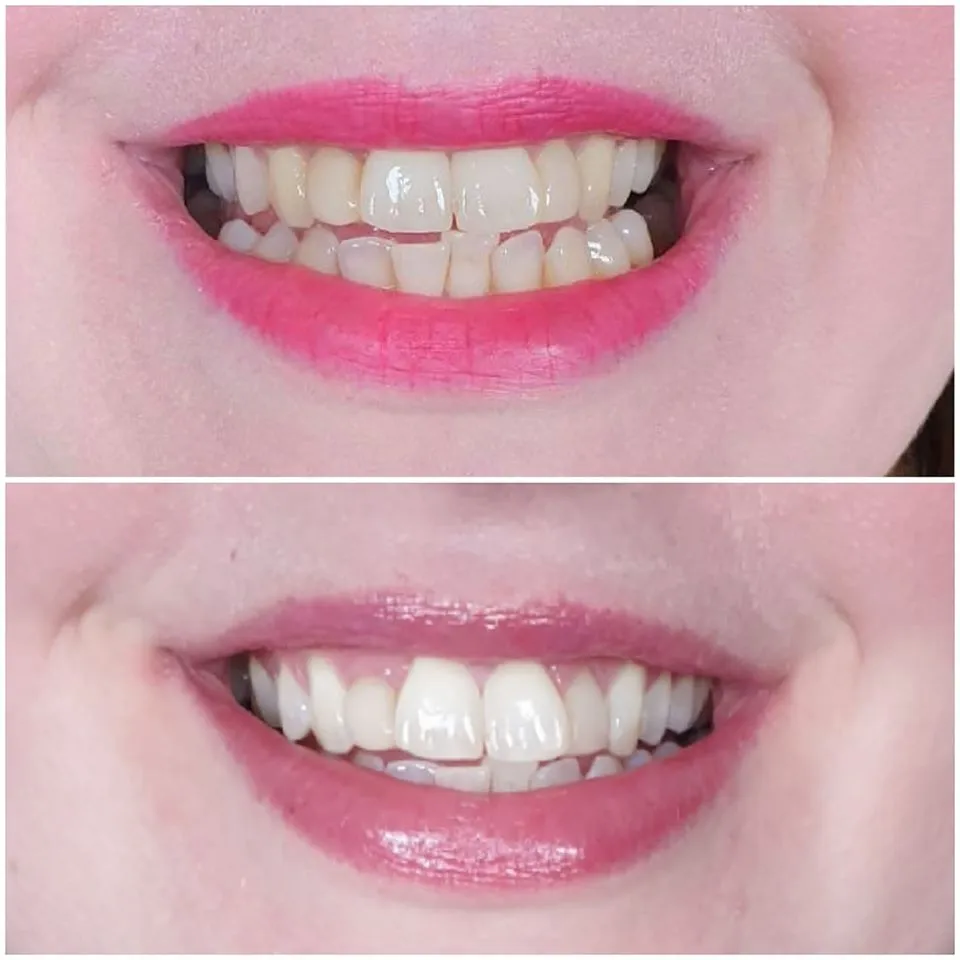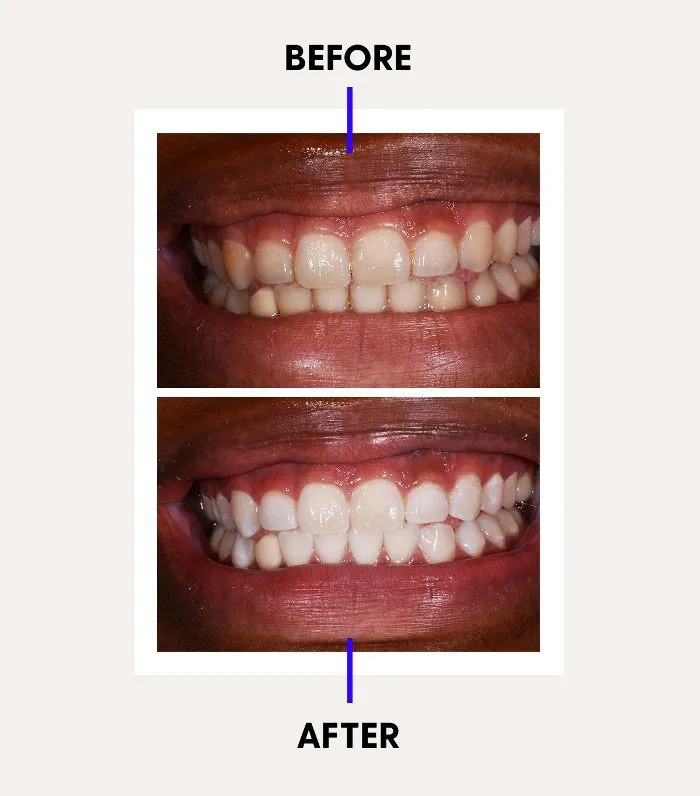What is Laser Teeth Whitening?
Laser teeth whitening, also known as power whitening, is a cosmetic dental procedure designed to lighten the color of your teeth. It’s a popular choice for those seeking a brighter, more attractive smile. The process typically involves applying a bleaching agent, usually hydrogen peroxide, to the teeth, which is then activated by a special laser light. This laser light helps to accelerate the chemical reaction, breaking down stains and discoloration on the enamel. The procedure is often performed in a dentist’s office and can offer noticeable results in a single session. The effectiveness and longevity of the results can vary depending on individual factors such as the initial shade of the teeth, the type of stains present, and lifestyle choices like diet and smoking habits. It’s a procedure that requires professional expertise to ensure safety and effectiveness.
How Laser Teeth Whitening Works
The process begins with a thorough dental examination and cleaning to ensure the teeth are free from plaque and tartar. The dentist will then protect your gums and soft tissues with a protective barrier, such as a rubber dam or gel. Next, the whitening agent, typically a high-concentration hydrogen peroxide gel, is applied to the surface of the teeth. The laser light is then directed at the teeth, which activates the bleaching agent. This laser helps the whitening agent to penetrate the enamel and break down the stain molecules, lightening the teeth. The process is usually repeated in cycles, with each cycle lasting for a certain amount of time, to achieve the desired level of whitening. After the procedure, the protective barrier is removed, and the teeth are rinsed. The entire process can take between one to two hours, and the results can be immediately visible.
Understanding Potential Laser Teeth Whitening Pain

While laser teeth whitening is generally considered safe, some individuals may experience discomfort during and after the procedure. The primary reason for pain is the sensitivity of the teeth to the bleaching agent and the heat generated by the laser. This sensitivity can manifest as a sharp, shooting pain or a more generalized ache. The intensity of the pain varies from person to person and depends on factors like the health of the teeth, the concentration of the bleaching agent, and the duration of the procedure. It’s essential to understand that some level of discomfort is normal, but it should be manageable. Your dentist will take steps to minimize any pain, such as using desensitizing agents or adjusting the intensity of the laser. Being aware of the potential for pain and discussing it with your dentist beforehand can help you prepare and manage your expectations.
Factors Influencing Pain During Laser Teeth Whitening
Several factors can influence the level of pain experienced during laser teeth whitening. These include the inherent sensitivity of your teeth, any existing dental conditions, and the concentration of the bleaching agent used. People with naturally sensitive teeth, thin enamel, or receding gums are more likely to experience discomfort. Also, the presence of cavities, cracks, or other dental issues can increase sensitivity. The higher the concentration of hydrogen peroxide in the bleaching agent, the greater the potential for pain, though this also often correlates with faster whitening results. Furthermore, the duration of the procedure and the intensity of the laser light can impact pain levels. Your dentist will assess these factors before the procedure and tailor the treatment plan to minimize any potential discomfort, but it is important to discuss your sensitivity levels and dental history beforehand.
Tooth Sensitivity
Tooth sensitivity is a common side effect of teeth whitening treatments, including laser whitening. This sensitivity occurs because the bleaching agent can penetrate the enamel and reach the dentin, which contains nerve endings. This can cause a sharp, temporary pain when exposed to hot, cold, sweet, or acidic foods and drinks. The level of sensitivity varies depending on the individual and the intensity of the treatment. Most people experience sensitivity for a few days after the procedure, but it typically subsides within a week or two. Using desensitizing toothpaste before and after the treatment can help reduce sensitivity. It’s also advisable to avoid extremely hot or cold foods and drinks during the period of sensitivity. Your dentist may also recommend fluoride treatments to help strengthen the enamel and reduce sensitivity.
Gum Irritation

Gum irritation is another potential side effect of laser teeth whitening. This can occur if the bleaching agent comes into contact with the gums or if the protective barriers are not properly applied. Symptoms of gum irritation can include redness, swelling, and tenderness. The irritation is usually mild and temporary, resolving within a few days. Your dentist will take precautions to protect your gums during the procedure. If irritation occurs, rinsing your mouth with warm salt water can help soothe the gums. Avoiding harsh brushing and flossing techniques during this time is also advisable. If the irritation is severe or persistent, consult your dentist, as they may prescribe a special mouthwash or ointment to aid healing and prevent further complications. Proper aftercare and adherence to your dentist’s instructions are essential for a smooth recovery.
Existing Dental Conditions
If you have existing dental conditions, such as cavities, gum disease, or cracked teeth, you may experience increased pain or discomfort during laser teeth whitening. The bleaching agent can exacerbate these conditions, leading to heightened sensitivity and pain. It’s crucial to address any existing dental issues before undergoing laser teeth whitening. Your dentist will likely recommend treating cavities and other problems before the whitening procedure. In cases of severe dental issues, laser whitening might not be recommended. It’s also important to inform your dentist about any dental work you have had, such as fillings or crowns, as these may not whiten in the same way as your natural teeth. A thorough dental examination is therefore essential to ensure the procedure is safe and appropriate for you. Discussing your dental history with your dentist is crucial for ensuring the best possible outcome.
Managing Pain During Laser Teeth Whitening
There are several ways to manage pain during laser teeth whitening and make the experience more comfortable. Your dentist can use desensitizing agents, such as fluoride treatments, before the procedure to reduce sensitivity. They can also adjust the concentration of the bleaching agent or the intensity of the laser light to minimize discomfort. During the procedure, you can signal to your dentist if you’re experiencing pain so they can make adjustments. After the procedure, taking over-the-counter pain relievers, such as ibuprofen or acetaminophen, can help manage any lingering pain. Avoiding very hot or cold foods and drinks for a few days can also help reduce sensitivity. Staying hydrated and following your dentist’s aftercare instructions are also essential for a comfortable recovery. Communicating openly with your dentist about your pain levels allows for proactive measures to make your experience more pleasant.
Pre-Treatment Preparation

Preparing for laser teeth whitening can significantly impact the comfort level of the procedure. If you know you have sensitive teeth, using a desensitizing toothpaste for a couple of weeks before the treatment can help reduce sensitivity. Make sure to have a dental cleaning before your laser teeth whitening session to remove any plaque or tartar, this ensures the whitening agent can effectively reach your teeth. Discuss your dental history and any concerns about sensitivity with your dentist before the procedure. Your dentist may recommend specific products or treatments, like a fluoride application, to further prepare your teeth. It is important to follow all of your dentist’s pre-treatment instructions carefully. Being prepared can make the overall experience more comfortable. Avoid foods and drinks that can stain your teeth in the days leading up to the procedure, such as coffee, tea, and red wine, to maximize the whitening results.
Pain Relief Methods
There are several pain relief methods that can be used during and after laser teeth whitening. During the procedure, your dentist may apply a desensitizing gel or use a laser setting that minimizes heat. If you experience pain, inform your dentist immediately, so they can adjust the treatment. After the procedure, over-the-counter pain relievers like ibuprofen or acetaminophen can help alleviate discomfort. For heightened sensitivity, dentists often recommend desensitizing toothpastes. Fluoride treatments can help strengthen the enamel and reduce sensitivity. Avoiding extremely hot or cold foods and drinks for a few days post-treatment can also help manage pain. Drinking plenty of water and rinsing your mouth with warm salt water can also provide relief. Following your dentist’s specific aftercare instructions is crucial for pain management.
Post-Treatment Care to Minimize Pain
Proper post-treatment care is vital for minimizing pain and maximizing the results of laser teeth whitening. Avoiding foods and drinks that can stain your teeth, like coffee, tea, and red wine, for at least 24-48 hours is recommended. Brush your teeth gently with a soft-bristled toothbrush and use desensitizing toothpaste. Avoid smoking, as this can stain your teeth and increase sensitivity. Use fluoride mouthwash as recommended by your dentist to help strengthen your enamel. Apply any prescribed medications or treatments as directed. Schedule a follow-up appointment with your dentist to assess your progress and address any concerns. By carefully following these guidelines, you can significantly reduce any discomfort. Regular dental check-ups and good oral hygiene habits will help maintain your bright, white smile and keep your teeth healthy.
What to Expect After Laser Teeth Whitening

After laser teeth whitening, it’s normal to experience some temporary side effects. The most common is tooth sensitivity, which can range from mild to moderate. Your gums may also be slightly irritated. The intensity of these effects varies from person to person. Most people find that any discomfort subsides within a few days to a week. The whitening results are typically visible immediately after the procedure, with teeth several shades lighter. However, the final result may not be fully apparent for a few days as the teeth rehydrate. It’s crucial to follow your dentist’s post-treatment instructions to manage any side effects and maintain the results. Maintain good oral hygiene, avoid staining foods and drinks, and schedule regular dental check-ups to ensure your smile remains bright and healthy.
Common Side Effects and How to Address Them
The most common side effects are tooth sensitivity and gum irritation. Sensitivity can be managed by using desensitizing toothpaste, avoiding hot or cold foods, and taking over-the-counter pain relievers. Gum irritation can be alleviated by rinsing with warm salt water and avoiding harsh brushing. Some people experience mild soreness or discomfort in the jaw, which usually resolves on its own. Rarely, more serious side effects like chemical burns to the gums may occur if proper precautions are not taken. If you experience any severe or persistent side effects, contact your dentist immediately. Following your dentist’s instructions and maintaining good oral hygiene habits can help minimize the risk and severity of side effects. Regular dental check-ups will also help in identifying and addressing any issues promptly.
When to Contact Your Dentist
While some discomfort after laser teeth whitening is normal, there are times when you should contact your dentist. If you experience severe pain that is not relieved by over-the-counter medications, seek professional advice. If gum irritation is excessive, with significant swelling, redness, or bleeding, contact your dentist. Any persistent pain or unusual symptoms, like a change in the color of your teeth or the appearance of new sensitivity after a few days, should be reported. It’s always best to err on the side of caution and contact your dentist if you have any concerns. They can assess your situation, rule out any complications, and provide appropriate treatment or advice. Regular dental check-ups and open communication with your dentist are essential for maintaining good oral health and ensuring a successful teeth whitening experience.
Alternatives to Laser Teeth Whitening for Sensitive Teeth

If you have sensitive teeth or are concerned about potential pain, there are alternative teeth whitening options available. One option is custom-fitted whitening trays provided by your dentist, using lower-concentration bleaching agents. These are used at home over a longer period, which often causes less sensitivity. Another alternative is in-office whitening with a lower concentration of the bleaching agent, combined with desensitizing treatments. Consider professional cleaning and polishing to remove surface stains, which can improve the appearance of your teeth without the use of bleaching agents. Discussing your sensitivity concerns with your dentist will enable them to recommend the most suitable option. It’s important to choose a method that suits your individual needs and minimizes potential discomfort.
Over-the-Counter Whitening Options
Over-the-counter whitening products, such as whitening strips, toothpastes, and gels, offer a convenient alternative for teeth whitening. These products typically contain lower concentrations of bleaching agents than professional treatments. Whitening strips are easy to use and can be applied directly to your teeth. Whitening toothpastes help remove surface stains and may contain mild abrasive ingredients. Whitening gels can be applied with a tray or brush. These options may cause less sensitivity than professional treatments but deliver more gradual results. Always follow the instructions on the product packaging. Before using over-the-counter products, consult with your dentist. They can advise you on which products are appropriate for your needs and if they are safe for your teeth and gums. Over-the-counter products are best for removing mild surface stains.
Professional Whitening Options
Professional teeth whitening options, offered by dentists, can provide more effective results than over-the-counter products. Besides laser teeth whitening, dentists also offer in-office whitening with custom-fitted trays, using stronger bleaching agents and desensitizing treatments to minimize sensitivity. They can also use methods to address specific staining issues, such as internal bleaching for teeth with discoloration from root canals. Professional whitening is performed under careful supervision, ensuring the safety and effectiveness of the treatment. Your dentist can assess the health of your teeth and gums before the procedure. A professional cleaning can remove surface stains and create a clean surface for whitening. Dentists also have access to products and techniques that are unavailable over the counter. Professional whitening delivers the most dramatic and long-lasting results and is customized to meet your unique dental needs.
